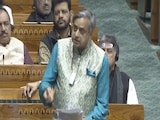Diabetes has emerged as a significant global health concern, with an increasing number of individuals being diagnosed each year. According to the World Health Organisation (WHO), approximately 422 million people worldwide suffer from diabetes, and this number is anticipated to rise in the future. This irreversible condition is characterized by sudden spikes in blood sugar levels. While a definitive cure remains elusive, adopting a diet rich in healthy foods can aid in its management. One such effective inclusion is Bajra (pearl millet), which offers remarkable health benefits for diabetes. Before delving into creative ways of integrating it into our diet, let's explore its incredible contributions to diabetes management.
Is Bajra Beneficial For Diabetics?
Indeed, Bajra proves to be an excellent addition to a diabetes-friendly diet. It boasts an abundance of fibre and magnesium, both of which contribute significantly to the effective regulation of blood sugar levels. Furthermore, its low glycemic index renders it particularly suitable for individuals dealing with diabetes. Renowned consultant nutritionist, Rupali Datta, underscores the merits of this wonder millet by stating, "Bajra serves as a valuable source of magnesium, a mineral associated with reduced diabetes risk. Additionally, its fibre content, combined with its slow-digesting starch, which gradually converts into glucose, plays a pivotal role in blood sugar management."
Also Read: Palak For Diabetes: 7 Easy And Healthy Ways To Consume Spinach
Here Are 5 Wholesome And Fascinating Approaches To Incorporating Bajra Into Your Diabetic Diet:
1. Bajra Dosa
Crafted from a blend of Bajra, rice, and urad dal, the batter for this dosa boasts high levels of fibre and protein. It emerges as a delectable breakfast option for diabetics, requiring a mere 20 minutes for preparation. Pair it with steaming sambar and chutney to savour its flavours. Click here for the complete Bajra Dosa recipe.
Photo Credit: iStock
2. Bajra Khichdi
Khichdi, a beloved comfort food in India, takes a unique twist with this variant that omits rice. Offering a harmonious balance of protein and fibre, it provides a fulfilling yet light dining experience. Incorporating this dish into your lunch or dinner can contribute to the effective management of blood sugar levels. Click here for the comprehensive Bajra Khichdi recipe.
3. Bajra Paratha
Replacing conventional whole wheat flour with Bajra flour, this paratha delivers a flavorful punch. Enhanced with turmeric, chilli flakes, and hing, the paratha features sesame seeds that impart a delightful crunch in every bite. Pair it with curd and your preferred pickle to elevate your mornings. Click here for the complete Bajra Paratha recipe.
Photo Credit: iStock
4. Bajre Ka Thepla
Bajra's potential extends to classic Gujarati thepla. Combining bajra flour, atta, methi, and green chillies with an array of spices, this dish is pan-cooked until crisp. Its exquisite taste and ease of preparation make it an ideal choice for quick meals. Find the Bajre Ka Thepla recipe here.
Also Read: This Easy Karela Tikki Can Help You Lose Weight, Manage Diabetes, and More
5. Bajra Methi Missi Roti
Elevate the traditional bajra roti by infusing it with the distinct flavour of methi leaves. This roti amalgamates two flours-bajra flour and wheat flour (atta)-resulting in a nutrient-rich creation. It serves as a delectable and nutritious addition to regular meals. Find the complete Bajra Methi Missi Roti recipe here.
Give these mouth-watering recipes a try to better manage your blood sugar levels. Nevertheless, it is advisable to consult your physician before embarking on significant dietary changes.















